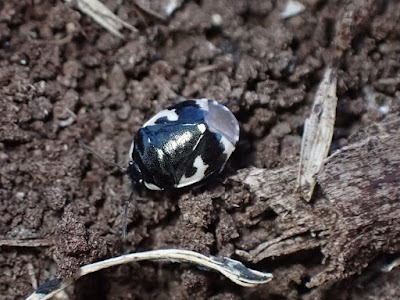Desperate times call for desperate methods. So today, I decided to build a couple of flight interception traps (aka Vane traps) from used cordial bottles. I cut two windows out and used one of the cut pieces to create a baffle to intercept passing insects.
I hung them by dead or dying apple trees at the bottom of the garden. The idea is that beetles and flies flying in to investigate this dead wood, hit the baffle and then drop into the liquid at the bottom. In this case, water with a drop of washing up liquid. Given that I'm checking the traps every day or so, this should suffice. If I was leaving things for longer then I would pop some monopropylene glycol in instead.
The temperature is still very cold so probably not much chance of stuff at the moment but will hopefully deliver the goods over the coming weeks of isolation and lock down.
I also swept this beetle from grass just before giving it a mow. Looked different to the Bruchus rufipes I normally see. I find the key to this group really tough so ended up posting it for others to help with. It appears to be Bruchidius varius. This species was added to the British list from a single specimen found in East Sussex in 1994. It is now widespread in south east England.
I'm still trawling through the backlog of 2019 beetles so will post some of the more interesting or novel (for me) records in a future post.




















































